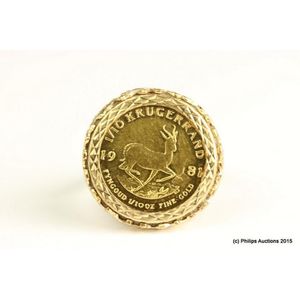Etruscan Style Amethyst Ring in 9ct Gold (6.84g)
You must be a subscriber, and be logged in to view price and dealer details.
Subscribe Now to view actual auction price for this item
When you subscribe, you have the option of setting the currency in which to display prices to $Au, $US, $NZ or Stg.
- Etruscan - The Etruscans were pre-Roman people who mainly inhabited central and part of north Italy, in the area corresponding to Tuscany. The civilisation was active from around 700BC until their assimilation into the Roman Empire in around the 4th century BC.
With the increasing importance of Rome they were virtually wiped out, for Rome would not tolerate a competitive civilization. Many Etruscan rituals and aspects of their culture were taken over by Rome: Etruscan funeral games became the Roman gladiatorial combats and the science of divination came from the Etruscans.
They were also incredible craftsmen in precious metals. It was said that the famous Etruscan Sibylline books of received wisdom were burnt by Rome and that the emperor Claudius was the last person who could read Etruscan, a language that is still largely undeciphered.
Black and red figure vases attributed to the Etruscans provided the basis for the Etruscan style of furniture, decorative arts and decoration first seen in Louis XVI furniture in the 1760s, and then adapted by Robert Adam in England.
The style was characterised by the use of the red and black colourways of the vases, together with motifs such as lions, birds, sphinxes and griffins.
Josiah Wedgwood was inspired by the civilisation, and in 1769 he opened his new ceramic factory at Stoke-on-Trent, naming it "Etruria Works". Using the modeller John Flaxman, he produced wares based on what was thought at the time, to be Etruscan themes.
At the end of the 18th and in the early 19th century, Etruscan themes were seen in glass, jewellery and furniture, and in the 1820s Coalport China produced a range of wares based on the Etruscan themes.
Around that time it was discovered that the archaeological treasures attributed to the Etruscans were of Greek origin, but the description of them as "Etruscan" continued.
This item has been included into following indexes:
Visually similar items

A jade and diamond gents ring. 22ct yellow gold, crafted as a significant heavy gents style ring, featuring a central cabochon piece of soli jade, medium green in colour, measuring 17.5 x 14.5 mm, bezel set in an open backed mount, surrounded by curved cha

A diamond set cluster ring, 18ct yellow and white gold, handcrafted as a quality oval cluster dress ring, centrally set with a red paste stone measuring 13.5 x 9.5 mm, bright deep red in colour, bezel set in yellow gold, framed by twenty brilliant cuts, to

A gold 1/10 Krugerrand coin signet ring, 14ct yellow gold mounted, set with a single 1/10 21.6ct yellow gold Krugerrand coin, dated 1981, bezel set in a mount of etched gold, pierced to gallery and shoulders, merging to a plain band. Coin weight 3.39grams

9ct gold hallmarked ring with intaglio head approx 4.1 grams
